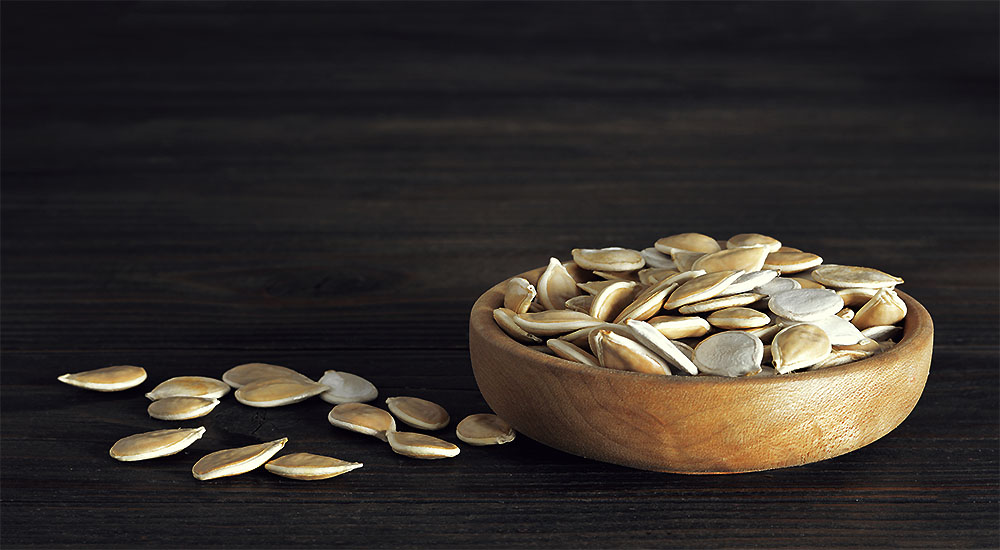What’s the Ideal Healthy Diet for Humans?

What foods should I be eating?
To call diet information confusing is a supreme understatement.
You’re fortunate in that you have choices of what you can eat. But the sheer variety of choices can be confusing.
- Should you eat high protein?
- What about high fat?
- Is high carbohydrate a good idea?
- What about fasting?
- High sugar?
STOP. Okay, that was a test. At least there’s one thing we can all agree on: added sugar is definitely not a healthy option. Note, I’m speaking of “added sugar”, not the sugar naturally found in fruit.
How to find the right diet
The right diet should be validated against many methods of testing. Do you want to follow a fad with little to no scientific research, or do you want a tried and true approach that you can safely follow for the rest of your life?
Of course, it’s the latter, but how do we find that data?
When evaluating diet information you should confirm that it is validated across several layers of science, not just one. It just makes sense.
Dr. Longo, the author of The Longevity Diet, uses an evaluation process he calls the 5 Pillars of Health. If what you are evaluating is scientifically accurate, each pillar will offer a layer of evidence that will arrive at the same conclusion.
An example of 5 Pillars of Health
Pillar 1: Basic research
Most scientific theories begin with researchers working on simple celled organisms and animals. This allows scientists to establish the fundamental properties of organisms and how dietary interventions can affect them.
Pillar 2: Epidemiology
Epidemiology is studying specific groups of people and what happens to them “in the wild” so to speak. It is epidemiological data that provides such information as the knowledge that those countries consuming the most dairy products have high rates of osteoporosis or weakened bones. It’s why you no longer hear the commercial, “Milk builds strong bones.” It turns out that just the opposite is true.
Pillar 3 – Clinical studies
Clinical studies follow after basic lab research and epidemiological studies. They are essential for comparing a theory against a control group. A classic example is testing a particular diet intervention in one group, while your control would be similar in age, weight, etc., who don’t follow the diet intervention. This allows researchers to identify what effect if any, the intervention has.
Pillar 4 – Centenarian studies
This covers epidemiological studies of specific “blue zone” populations, as they are called, where people commonly live to 100 and beyond. This pillar looks at the real world for confirmation a diet pattern is safe and effective. Populations in California, Ecuador, Greece, and southern Italy have been studied extensively for their long-lived populations.
Pillar 5 – Studies of complex systems
This the most abstract of the pillars, where other “machines” are looked at to give us insight into the human body. As an example, to better understand the effect of aging on the body and its need for higher protein and calories as we get beyond the age of 75, one can compare it to how a poorly maintained car may lose fuel efficiency as it ages.
What would an Ideal Diet provide?
An ideal diet would provide:
- Long term health
- Ideal weight
- High energy and vitality
- Strong procreation ability
- Ideal cognitive function
That is a good list of what we could ask for from the correct diet. Any others you can think of?
Does your health history influence an ideal diet’s success?
Your life; your genetics and your experiences all affect how you interact with the environment and what foods you consume. As we age we accrue a variety of damage, physically, hormonally, mentally.
Are any of the following true for you?
- Many antibiotics as a child or young adult.
- Growing up with a terrible diet or adopting a junk food diet in college or later.
- Abusing alcohol or drugs at some point in your life.
- A strong family predisposition to a particular disease(s) or condition.
- Multiple episodes of physical stress from sports or injuries.
- Emotional stress from whatever source that has been chronic at some point in life.
- Exposure to certain chemicals or mold in a living or work situation.
- Lack of physical activity.
- Suffering from intense food cravings making it difficult for you to eat well.
- Multiple drugs needed to treat a health condition.
The list could be longer, but you get the idea. There can be extenuating circumstances that have put a burden on your body over and above that of another person.
That’s okay. The body is a tough machine and it can handle a lot.
An Ideal healthy Diet would repair prior damage
Taking the above list into consideration we would additionally want an Ideal Diet to:
- Repair the damage done to the body thus far
- Detoxify any chemicals, drugs that could have caused damage.
- Overcome any genetic predispositions to manifest a certain disease state, even if that disease is already manifest.
- Balance hormones that have been causing any stress on the body or mind.
That sounds like a tall order. Would it possible?
Yes. The human body is incredibly capable of repairing itself. I frequently quote the datum that the longevity potential of the human body is about 120 years. This includes all your organs and body parts. They are designed to thrive beyond 100 years.
You may find that exciting or scary, but it is a fact.
Will the right diet allow you to play the longevity game?
There is strong science supporting that the right diet dovetails beautifully with the body’s inherent longevity abilities.
The Ideal Diet would achieve living healthy longer, but we also need to address the repair of prior damage, as we just discussed.
The Ideal day-to-day Diet is revealed below, but first, let’s address the need of repair based on what you have endured so far in life.
Calorie restriction
Let’s begin by looking at some science:
- Mammals, including humans, live longer when calorie-restricted.
- Certain aging pathways are turned off when food, particularly protein from an animal source, and sugar, are removed from the diet.
- Autophagy (self-eating), or the deletion of dead and damaged cells, along with the purging of damaged parts of cells and organs, also occurs during calorie restriction.
- Stem cells are produced during calorie restriction. They are nascent cells, ready to become whatever new, healthy cells the body most needs after it has deleted the old and damaged cells and cell parts.
It’s a brilliant system that your body can perform incredible anti-aging activities while calories restricted, but it’s something we do not regularly tap into. Why?
With the advent of grocery stores, let alone those open 24/7, there has been no lack of available food to modern Man. Many Americans eat until they fall asleep and start eating again the moment they wake up.
A healthy daily fasting period of 12 hours each day rarely occurs. Twelve hours, based on the 5 pillars of health, seems to be the “sweet spot” for daily fasting. More than 13 hours can create difficulties such as developing gall stones. Further, research supports that those who skip breakfast are at greater risk of developing heart disease and it decreases your lifespan.
One problem; no one enjoys feeling hungry
It’s exciting to think you can truly reverse damage to your body and produce your own stem cells. The fact that these stems cells then replace the damaged, unhealthy, parts of your body that have just been deleted during a calorie restriction period, is miraculous.
But we’re back to the issue that no one likes to fast or feel hungry for a long period of time.
What if fasting was optional?
What if you could:
- achieve healthy weight loss
- lose the fat around the visceral organs (the dangerous belly fat that increases your incidence of heart disease, diabetes, and cancer)
- repair damaged cells and organs
- turn off aging pathways
- power up anti-aging mechanisms, and
- preserve lean body mass,
And… you could do it all without eliminating food?
That sounds promising.
The Fasting Mimicking Diet (FMD)
The good news is you don’t need to complete fast. The fasting-mimicking diet (FMD) created by the author of The Longevity Diet, Dr. Longo, and his team of researchers, allows you to eat while still achieving all the benefits of fasting.
In fact, the benefits are even better than those seen with complete water fast.
How do I mimic fasting?
The fasting-mimicking diet is a 5-day program of low-calorie meals containing particular key nutrients, 66 in total, coming from real food.
Each 5-day program is done anywhere from 2 to 12 times per year, depending on what your health status dictates. It’s important to mention that the key nutrients and their balance are not something you can re-create successfully on your own. It is a prescribed kit, prescribed by a doctor.
It’s “real” food, low calorie, with herbal teas, but balanced in such a way that trying to do it on your own could be dangerous, per Dr. Longo.
He likens it to “trying to make your own medicine at home”; it can backfire. He’s quick to point out that he makes no money from the food kits; all monies generated for it and the purchase of his book go to his charity Create Cures.
With that said, he also insists that everyone doing the program is under a doctor’s care because when the diet was first released in Italy, his native country, some of those attempting to do it on their own ran into trouble.
Does the diet have to last 5 days?
The reason the diet is 5 days in duration is to accomplish all the goals of anti-aging and repair. Beyond weight loss, which you can definitely expect, cellular optimization and rejuvenation take some time to occur.
It may surprise you to learn that it takes a full 24-30 hours to completely digest the last meal that occurred the day before you started the FMD. It then takes 2 days to get into a ketogenic mode, from using outside fuel to using your abdominal fat for fuel. Once in this phase, your body breaks down your fat and produces ketone bodies as a source of internal calories and nutrients.
Then during the last 2 days, autophagy occurs, the breaking down of cell and organ components. This is a positive anti-aging action; you break down and recycle, and in the final stage of the FMD stem cells flood into your system to replace the damaged cells and components. On Day 6 when you refeed, the stem cells become the exact cells that were deleted. The damage is replaced with new and healthy.
The Longevity Institute at USC has researched this area for 20 years and found that going beyond the 5-day mark can start to negatively influence lean body mass including loss of muscle, not the goal.
What’s the difference between the fasting-mimicking (FMD) and the ketogenic diet?
I’ve recently written about the ketogenic diet here. There are very big differences between the ketogenic diet and the FMD. Namely, the FMD:
- Is very low in protein while a ketogenic diet is typically quite high.
- Is very low calorie which again, a diet that is 75% fat, a ketogenic diet, couldn’t possibly be.
- Initiates autophagy, the process by which old, sick cells are destroyed and eliminated, a ketogenic cannot do this.
- Reduces visceral fat, the dangerous, disease-causing fat around your abdominal organs. A ketogenic diet can flatten your belly and cause you to lose some weight but it will not achieve the specific reduction of dangerous, visceral fat.
How often should I do the FMD?
We’ve reviewed the “special” fasting-mimicking diet that will jumpstart your health journey. It can be performed multiple times per year depending on your health status. An ideally healthy individual, sadly that represents about 1% of us, would do the FMD twice per year. Those with weight to lose or suffering type 2 diabetes, heart disease, autoimmune disease, etc, would likely benefit from a monthly or bi-monthly interval. Note: the FMD cannot be done on your own if you are taking insulin.
The Ideal Diet for health and longevity
One question to ask yourself is: “Am I really interested in playing the long game of health and longevity?” Some people aren’t. It may be because you’re young and it doesn’t seem that important. It may be that you’re elderly and you feel it’s too late. Whatever the reason, what I’m about to review is something that will interest you if you want to play the long game.
The opposite “take” on health practices would be the short game approach. Someone who likes to follow the fads, see quick changes on the scale or in their energy level, and will readily jump to the next fad once the first one stops working.
It’s not something I recommend, because there are frequently inherent dangers associated with these fads. See my recent blog on ketogenic diets as an example [here].
7 simple rules of the Ideal Human Diet
This diet is derived from the most robust, long-term research that passes “the test” across all 5 pillars of health.
Eat this:
- Eat mostly plant-based with small amounts of fish
Strive for a 100 percent plant-based diet, including one or two servings of clean (low mercury) fish each week. - Consume low (about 10%) of your diet as protein
Consume approximately 0.35 to 0.40 grams of protein per pound of body weight per day. If you weigh 150 pounds, that is 53 to 60 grams of protein per day, of which about 30 grams should be consumed in a single meal to maximize muscle growth after exercise. If you are an elite athlete, you may need to raise this quotient to maintain your muscle mass. Further, protein intake should be raised about 20% after age sixty-five to seventy to prevent any loss of muscle and weight. You want to avoid frailty with older age. Other than 1-2 meals per week of fish, the rest of the protein consumed is from plant sources, to minimize the negative effects of animal protein on aging, initiating disease and inflammation. - Maximize good fats and complex carbs, while minimizing bad fats and sugars
Complex carbohydrates should make up about 60% of your diet, including large amounts of a variety of vegetables, beans, peas, lentils (legumes), small amounts of fruit, and whole grains as tolerated. Healthy fats should make up 30% of your diet, including nuts, olive oil, avocado, seeds, and low mercury fatty fish such as salmon and anchovies. Avoid saturated, hydrogenated, and trans fats. Similarly avoid added sugar, processed and simple carbohydrates such as pre-packaged desserts, white bread, fruit juice, etc.
Add this:
4. Additional nourishment
The body needs protein, essential fatty acids (omega-3 and omega-6), minerals, vitamins, and sufficient sugar to wage the battles in and outside of your cells. To ensure adequate nutrition, take a multivitamin and mineral pill supplement minimally 2-5 times per week, depending on your health status. Additionally, an omega-3 soft gel made from algae should also be taken a few times per week, depending on your health status.
Timing and frequency:
5. Eat two meals per day plus a small snack
Unless your waist circumference (<35.5” for men and <29.5” for women) and body weight are in the normal to low range, it is best to eat breakfast plus one other meal (lunch or dinner) each day along with a low-calorie, balanced, nourishing snack (about 150 calories). If your weight or muscle mass is too low, then eat three meals per day. Note: ideal waist measurements are cited as 33” and 27” respectively, but the higher amounts listed above should still be effecting in reducing disease risk.
6. Time-restricted eating
Eat during a twelve to thirteen-hour window per day. For example, if you eat dinner at 8 p.m., don’t eat breakfast until 8 a.m. the next morning. Of course this 12 hour “fast” each day is another way to think about it. You’ve likely heard of individuals who fast for far longer time periods – 14 to 16 hours or more. Research shows two things you should consider: Fasting for longer than 12 to 13 hours increases your risk of developing gall stones and needing surgery. Skipping breakfast is associated with an increased risk of heart disease and shorter life expectancy.
7. Periodic fasting-mimicking diet
People who are under seventy years of age, not frail or malnourished, and free of certain diseases, notably insulin-dependent diabetics, should undergo a periodic fasting-mimicking diet, which we have already discussed.
Summary
The good news is that research exists to tell us what an ideal diet actually is.
- It’s not high animal protein which is linked to cancer and shorter life expectancy.
- It’s not low complex carbohydrate; linked to increased mortality from all causes of disease.
- It’s not high fat, which is also linked to increased risk of degenerative disease and a shorter lifespan.
- It’s certainly not high sugar or high simple carbohydrates; that you already know.
The 7 simple steps above outline a truly healthy diet, validated across decades of research and supported by centenarian populations.
It is simple, but you’ll need some help
Hopefully, the relative simplicity of the Ideal Diet excites you. If you’re also feeling a little overwhelmed, not knowing where to start, don’t worry. We are here to help you through it.
If your health is not where you want it to be, we have the tools to help you.
We won’t mask your symptoms with drugs and we’ll hold your hand through the journey of regaining your health.
It’s truly exciting to “feel younger” biologically, despite the forward march of chronological aging.
How’s your health?
Do you suffer from any degenerative disease such as high blood pressure, type 2 diabetes, high cholesterol, overweight or autoimmune disease?
Too many Americans are suffering from these preventable, treatable, and, as research supports, reversible diseases.
Are you ready to enjoy the long game of health?
Our team of doctors is here to help you. The good news is we have excellent success in treating chronic degenerative diseases.
Discovering your ideal diet is a mainstay of our program, as is the evaluation of nutrient levels, food sensitivities, infections, toxins, genetic predispositions, and hormonal imbalance.
Each program is tailored to you; it addresses the exact imbalances creating your symptoms.
We can help.
Do you need help with your health?
We have the diagnostic and testing tools, the clinical experience, and a different medical approach to discovering the root cause of why you have the symptoms that are bothering you. As long as you are ready to make some dietary and lifestyle changes, we can help you. We will "hold your hand" through the changes, step by step, to make each step an easy one. We are located in Clearwater, FL, at 1000 S Ft Harrison, at the corner of Ft. Harrison Ave. and Magnolia St. There is plenty of parking space directly accessible from Ft Harrison. If it is not convenient for you to come to Root Cause Medical Clinic, we offer telehealth/telemedicine consultations to residents of certain states. Call us for details.
Contact us for a Consultation – Call 727-335-0400

Dr. Vikki Petersen DC. CCN
Founder of Root Cause Medical Clinic
Certified Functional Medicine Practitioner
Dr Vikki Petersen is a public speaker, author of two books, several eBooks and creates cutting edge content for her YouTube community. Dr Vikki is committed to bringing Root Cause Medicine and its unique approach to restoring health naturally to the world.
Ask a Doctor
Have a health concern you'd like to speak with a doctor about? Or just want clarity on a subject? Ask Us!
Featured Articles
Popular Stories
References:
- The Longevity Diet by Dr. Valter Longo, Ph.D.
- CreateCures.org
- Luigi Fontana, et al. Cell Reports 2016 Jul 12; 16(2): 520-530. Decreased consumption of branched-chain amino acids improves metabolic health. https://www.ncbi.nlm.nih.gov/pmc/articles/PMC4947548/


